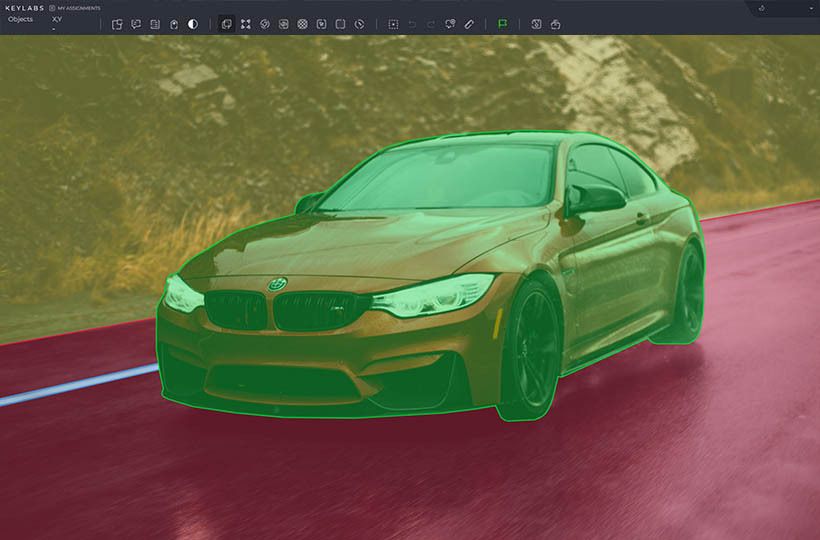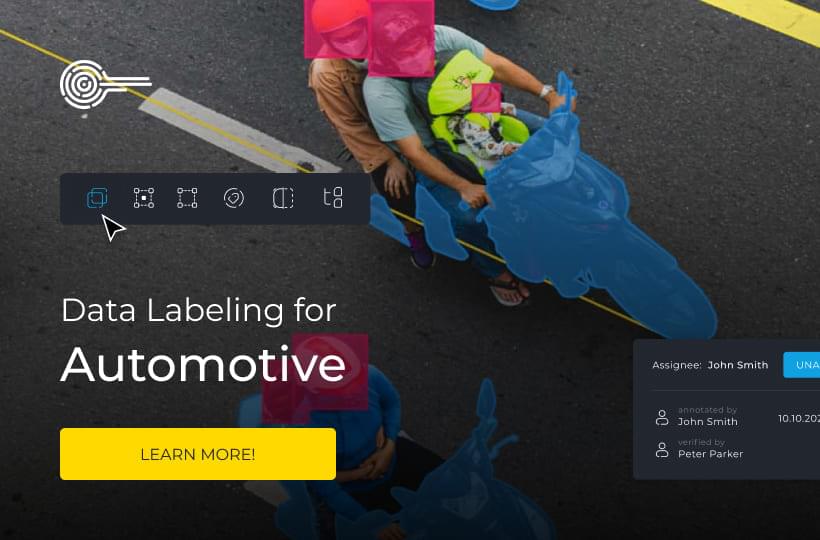Fine-Grained Attribute Annotation: Capturing Subtle Details in Images
Fine-grained attribute annotation is used in computer vision to describe images with an added level of subtlety. Instead of simply naming an object, this method helps models notice smaller features that make one object slightly different. Such details often matter in tasks where accuracy and subtle variations are key.
The problem is that these attributes can be subjective, subtle, or easily missed. The two images may look almost identical, but they still have different qualities that need to be noted. Annotation at this level requires careful labeling and often expert knowledge. But when done correctly, it allows machine learning systems to operate much more sophisticatedly.
Key Takeaways
- Fine-grained attribute annotation captures subtle image details crucial for AI applications.
- Traditional global ranking methods struggle with nuanced visual comparisons.
- New approaches focus on local learning for improved attribute prediction accuracy.
- Selecting the correct data is more critical than having more labeled data.
- Fine-grained comparisons are essential for applications like biometrics and image search.

Definition and Importance
Fine-grained attribute annotation refers to labeling images with detailed and often subtle characteristics that distinguish visually similar categories or instances. This is important because it allows computer vision models to recognize specific differences within a broad class, such as different breeds of dogs or types of shoes. These annotations help to create models that can handle real-world ambiguity and recognize highly detailed details. Without this level of annotation, systems often miss essential differences that affect performance in applications such as quality control, biometrics, or scientific research. In essence, fine-grained annotation brings machine perception closer to expert-level human judgment.
Key Differences from General Labeling
- Level of detail. Generic labeling assigns broad categories (e.g., "dog" or "car"), while fine-grained annotation captures subtle features (e.g., "curly fur" or "sports model").
- Visual similarity within classes. Fine-grained tasks deal with objects that look very similar, requiring attention to minor differences, unlike general labeling, where categories are often visually distinct.
- Attribute-based descriptions. Instead of labeling only the type of object, fine-grained annotation includes descriptive properties such as color shade, shape variation, or texture.
- Expertise is required. Fine-grained annotation often requires subject matter expertise (e.g., distinguishing between bird species), whereas general labeling can usually be done with minimal training.
- The complexity and cost of annotation. Accurately labeling fine-grained attributes takes more time and effort, making it more expensive and complex than general image labeling.
Applications of Fine-Grained Annotation
Fine-grained annotation is used in various fields where subtle visual differences are essential. Wildlife monitoring and biodiversity research help distinguish closely related species, such as birds or insects, that differ only in minor features or size. In e-commerce and fashion, it supports systems that can recognize product variations such as fabric texture, sleeve length, or color tone, improving the accuracy of searches and recommendations. In medical imaging, fine-grained attributes help detect slight variations in scans that may indicate early signs of disease, such as slight asymmetry or faint patterns. It is also used in facial recognition and biometric systems to identify individuals based on small features such as the nose's shape or the eyebrows' curve.
In addition to recognition, fine-grained annotation allows for interactive AI applications where users want to describe what they want in specific terms, such as "red car with a black roof and five-spoke wheels". Autonomous vehicles help the system distinguish between similar road signs or interpret pedestrian gestures. Quality control for manufacturing allows for the detection of minor defects or inconsistencies that do not appear in general labeling.
Techniques for Fine-Grained Attribute Labeling
Several methods are used to achieve fine-grained attribute labeling, each adapted to handle subtle differences that generic labeling ignores. One common approach is manual annotation, where trained annotators use structured guidelines to label attributes with high accuracy. This ensures accuracy but is time-consuming and expensive. To scale this up, crowdsourcing with quality control is sometimes used, where multiple annotators tag the same image and consensus or verification methods ensure reliability. Tools such as bounding boxes, part annotations, and segmentation masks often highlight specific areas associated with each attribute. Here are some common types of annotations used in fine-grained tasks:
- Bounding boxes. Rectangular outlines are drawn around objects or specific parts to focus on where attributes appear.
- Semantic segmentation. Pixel-level markings that accurately separate different areas of interest in an image.
- Attribute tags. Descriptive labels such as "striped", "curved", or "glossy" are often applied to whole objects or parts.
- Key points. Specific points, such as the corners of the eyes or the edges of the wings, are placed at key locations to track shape and alignment.
Another method involves developing an attribute taxonomy, where attributes are broken down into organized categories such as shape, color, pattern, or material so that annotators follow consistent descriptions. Active learning also reduces the number of samples that require manual annotation by allowing the model to suggest which images are most informative for further labeling. For some tasks, semi-supervised or weakly supervised learning helps by using a small set of accurately labeled data and a larger pool of general images to train the models.
Benefits of Fine-Grained Attribute Annotation
- Increased model accuracy. Models trained using fine-grained attributes can detect subtle visual differences, resulting in more accurate classification and recognition.
- Better generalization. Fine granularity helps models learn deeper visual patterns, making them more robust to diverse or invisible examples.
- Improved search and recommendations. Systems can support specific queries, such as "leather jacket with silver zippers" or "bird with a red crown and white wings," improving the user experience.
- Better explanation. Fine-grained labels allow artificial intelligence to justify decisions using human-interpretable features, making results easier to trust and understand.
- Effective quality control. In manufacturing or medicine, these annotations help to identify minor flaws or early signs of problems that general labels may miss.

Challenges in Fine-Grained Annotation
- Subtle visual differences. Many attributes are difficult to distinguish even for humans due to minimal or ambiguous visual cues between similar elements.
- Subjectivity of labeling. Annotators can interpret attributes differently - what one person sees as "light gray" may be labeled as "off-white" by another, leading to contradictory data.
- High cost of annotation. Fine-grained labeling requires more time, attention, and often expert knowledge, making it slower and more expensive than general labeling.
- Scalability issues. Creating large datasets with consistent fine-grained annotations is challenging, mainly when covering a wide range of categories or attributes.
- The need for detailed taxonomies. Defining clear, structured sets of attributes is challenging and essential for consistency, but creating them requires careful planning and subject matter expertise.
Best Practices for Fine-Grained Attribute Labeling
Unlike general labeling, where broad categories are sufficient, fine-grained tasks rely on subtle distinctions that can be easily misinterpreted or missed. Managing this complexity requires a combination of a clear structure, expert oversight, and the right tools. The process should reduce ambiguity while considering the richness of visual detail. Good practices improve the labeling quality and make the annotation process more efficient and scalable. Several best practices are widely recommended for practical annotation:
- Develop clear annotation guidelines. Detailed instructions with visual references help annotators interpret attributes consistently.
- Use structured attribute taxonomies. Organizing attributes into predefined categories (e.g., color, texture, or shape) prevents duplication and confusion.
- Incorporate peer review. Subject matter experts can resolve subtle or complex cases, improving accuracy in specialized datasets.
- Apply quality control mechanisms. Consensus labeling, auditing, or emissions labeling helps maintain high data quality.
- Use annotation tools. Interfaces that support part captions, bounding boxes, and real-time validation features speed up and improve the annotation process.
- Iterate using model feedback. Using early model results to identify weaknesses can focus annotation efforts where they matter most.
- Training and calibration of annotators. Regular training and feedback sessions help keep annotators up to date with changing standards.
If these practices are followed, detailed annotation becomes more than just a labeling task - it becomes a strategic process. The result is data that enables computer vision models to achieve expert-level discrimination, whether in species identification, product recognition, or any other field where visual nuances play a crucial role.
Summary
Fine-grained attribute annotation is crucial in training machines to recognize and describe subtle visual details beyond broad categories. This detailed level of labeling helps models become more accurate and nuanced, allowing them to distinguish between visually similar objects or variations that are often important in real-world applications. This process is inherently more complex and demanding than general labeling, requiring specialized methods, expert input, and a sophisticated organization to maintain quality and consistency.
Despite challenges such as subjectivity, high costs, and scalability, practical strategies and tools have emerged to address these challenges. Clear guidelines, structured taxonomies, peer review, and continuous feedback loops on model predictions contribute to creating reliable annotations. When done correctly, fine-grained annotation enhances the power of artificial intelligence systems in search, quality control, medical diagnosis, and species identification, ultimately bridging the gap between human-level detail recognition and automated vision.
FAQ
What makes fine-grained attribute annotation different from general labeling?
Fine-grained annotation focuses on subtle, detailed traits within similar-looking objects, while general labeling assigns broad categories. It requires capturing minor differences that general labeling often overlooks.
Why is fine-grained annotation essential for computer vision?
It improves model accuracy and helps AI systems recognize nuanced variations, improving them at tasks like species identification, product differentiation, or medical analysis.
What are some common types of fine-grained annotations?
Typical types include bounding boxes, part annotations, segmentation masks, attribute tags, and landmark points, each helping to capture specific details or regions in images.
What challenges do annotators face with fine-grained labeling?
Annotators struggle with subtle visual differences, subjective interpretations, high time costs, and the need for expert knowledge, which makes consistency difficult to maintain.
How can expert review improve fine-grained annotation?
Experts help resolve ambiguous cases and ensure that complex or subtle attributes are labeled accurately, especially in specialized domains like biology or medicine.
What role do annotation tools play in fine-grained labeling?
Specialized tools support precise labeling techniques such as part marking and segmentation, speeding up the process and improving accuracy.
How does active learning contribute to fine-grained annotation?
Active learning helps prioritize which images need labeling by selecting the most informative or uncertain samples, reducing the overall annotation workload.
In what ways does fine-grained annotation enhance AI-powered search and recommendation systems?
It enables detailed filtering and querying based on specific traits, allowing users to find exactly what they want, such as a particular style or color variation.
Why is quality control critical in fine-grained attribute labeling?
Due to the subtlety of attributes and subjectivity in labeling, quality control methods like consensus checks and audits are essential to maintain dataset reliability.
What benefits does fine-grained annotation provide in quality control and inspection?
It allows early detection of minor defects or variations that general labels would miss, improving overall product quality and reducing errors.
